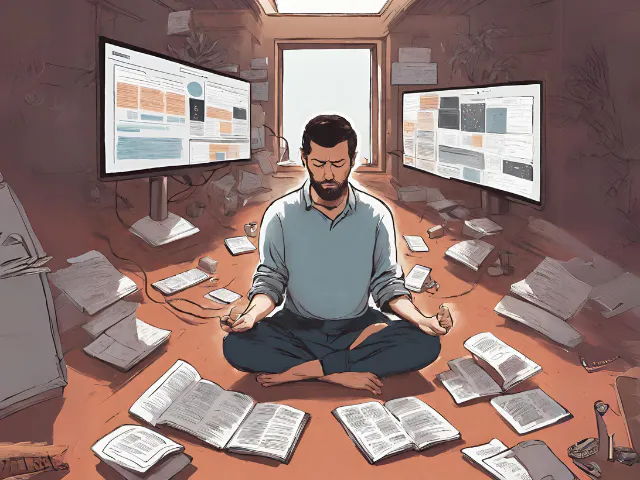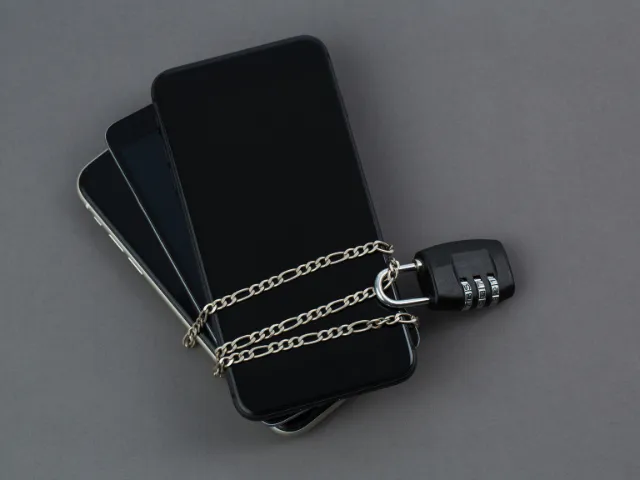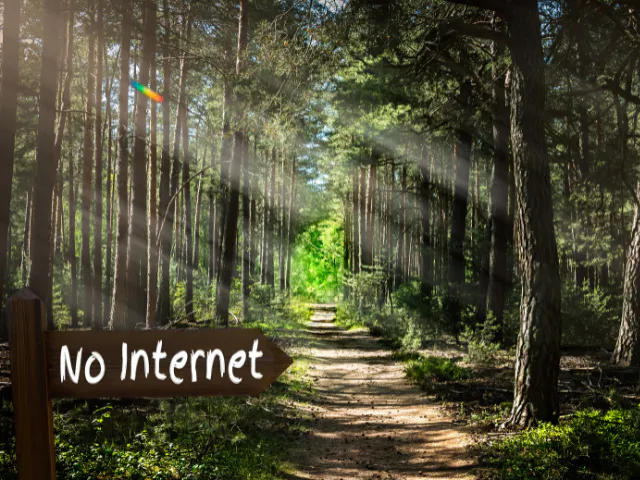In today’s hyper-connected world, our lives are intertwined with screens, be it smartphones, laptops, or tablets. The pings, dings, and buzzes of notifications have become the soundtrack of our daily existence. But have you ever stopped to consider the toll this constant connection takes on your mental and physical health?
An increasing number of studies suggest that our relentless engagement with digital devices might be doing more harm than good. From disrupted sleep patterns to declining mental well-being, the side effects of screen addiction are becoming hard to ignore.
Enter the concept of a digital detox. It’s not about shunning technology entirely but finding a harmonious balance. This guide delves into the importance of taking a break, understanding the science behind digital detoxification, and offering practical steps to reclaim your peace and focus.
Why You Need a Digital Detox

The digital age has ushered in an era of digital dependence. While technology has made our lives easier in countless ways, it’s essential to recognize when it starts to tip the balance from being beneficial to burdensome.
Understanding the Need for a Break from Technology
Every scroll, swipe, and click might seem harmless, but cumulatively, they can lead to a state of constant distraction. The human brain wasn’t designed for the barrage of information and stimuli that modern technology throws at it. This constant engagement can lead to feelings of overwhelm, anxiety, and even burnout.
Moreover, studies have found that spending too much time on digital devices can negatively impact self-esteem, especially when comparing oneself to the often idealized portrayals on social media platforms.
Recognizing the Signs You Need to Unplug
How do you know it’s time for a digital detox? The signs can be subtle but telling.
Physical symptoms might include eye strain from staring at screens or disrupted sleep due to late-night smartphone use.
On the emotional front, feeling the compulsive need to check your phone, even in the absence of alerts, or experiencing anxiety when separated from your phone are clear indicators.
Furthermore, if you find yourself mindlessly scrolling through apps without any real purpose or feel that your real-world relationships are suffering because of excessive screen time, it’s a sign that you might need to reassess your digital habits.
The Science Behind Digital Detoxification

While the term “digital detox” might sound trendy, there’s a solid foundation of scientific research that underscores its importance. Let’s explore how our brains and bodies react to constant digital stimulation and the benefits of taking a break.
The Brain on Technology
Our brains are incredibly adaptable, but the rapid rise of digital technology presents challenges that our ancestors never faced. Constant engagement, especially on smartphones, affects our cognitive functions, attention spans, and even our mood.
Research suggests that the dopamine-driven feedback loops created by apps and notifications can lead to addictive patterns similar to gambling. Every alert or notification gives a small dopamine hit, making us come back for more, even if it’s detrimental to our well-being.
Moreover, another study found that excessive screen time, especially before bedtime, can suppress melatonin production, disrupting our sleep cycles. Poor sleep, in turn, affects our mental health, productivity, and overall life satisfaction.
Reaping the Benefits of Taking a Break
The good news? Even short breaks from our screens can have profound benefits. Taking time away from screens can lead to improved sleep patterns, better focus, and a significant reduction in stress levels. Additionally, incorporating practices like somatic therapy can further enhance your mental and physical health by addressing the mind-body connection and promoting overall well-being.
Furthermore, a digital detox can help improve our interpersonal relationships. Without the constant distraction of devices, we can engage in deeper, more meaningful conversations, strengthening our connections with loved ones.
By understanding the science behind digital detoxification, it becomes clear that unplugging isn’t just a luxury—it’s a necessity for our mental and physical health.
Digital Detox Card Deck: 56 Practices to Help You Detox, De-Stress, Distract and Discover
Digital Detox: Why Taking a Break from Technology Can Improve Your Well-Being
Practical Steps to Start Your Tech Detox Journey

Embarking on a digital detox doesn’t mean renouncing all technology. Instead, it’s about creating mindful habits and setting boundaries to ensure technology serves you, rather than the other way around. Here’s how you can start:
Setting Clear Boundaries
Designate Tech-Free Zones: Whether it’s the bedroom, dining room, or a reading nook, having spaces in your home where digital toys are off-limits can make a significant difference. For instance, keeping your phone in a different room while sleeping can enhance sleep quality and reduce the urge to check notifications upon waking.
Scheduled Time Away from Screens: Allocate specific times during the day when you’ll be entirely offline. This could be during meals, the first hour after waking up, or the last hour before going to bed. Such practices help in cutting back on mindless swiping and foster a more intentional relationship with technology.
Engaging in Alternative Activities
Rediscover Non-Digital Hobbies: Remember that book you’ve been meaning to read or the garden you wanted to tend to? Now’s the time! Engaging in activities that don’t involve screens can be incredibly refreshing and fulfilling.
Connect Without Digital Interference: Spend quality time with family and friends without the constant pings of alerts. Whether it’s a walk in the park, a board game night, or just a heartfelt conversation, these moments of genuine connection can provide relief from digital overwhelm.
Mindful Technology Use
Monitor Your Digital Media Use: There are several apps available that can track the amount of time you spend on your phone, helping you become more aware of your habits. Once you have this data, set a goal to reduce the time you spend online gradually.
Declutter Your Digital Space: Just as a cluttered room can cause stress, a cluttered digital space can be overwhelming. Regularly review and uninstall apps you no longer use, organize your files, and clear out unnecessary emails.
Utilizing Apps for Mindful Tech Use
While setting boundaries and engaging in alternative activities are foundational steps to start your tech detox, leveraging the power of technology itself can be paradoxically beneficial. There are several apps designed specifically to aid in digital detoxification, helping you monitor and reduce your screen time while promoting mindful tech use.
- OFFTIME: This app allows users to block selected apps or incoming calls for a specified duration. It also features call-blocking that lets you choose which contacts can reach you during your OFFTIME. If you use your phone during the set OFFTIME hours, you’ll receive warning notifications. The app also tracks the amount of screen-free time you’ve accumulated.
- Digital Detox: This app challenges users to reduce their screen time, with various challenge levels ranging from 2 hours to an entire day. If you quit a challenge early, it will cost you $0.99. The app also gamifies the experience, allowing users to earn points for completing detox challenges.
- Digital Detox Dragons: This app gamifies the phone-free experience by combining it with a Dungeons & Dragons-style game. By staying away from your phone for set periods, you earn experience points.
- minimalist phone: This app reduces your smartphone’s features to encourage less device usage. It displays app icons as text-only links, sends time reminders to interrupt social media browsing, and stores notifications for later viewing.
- OffScreen: This app provides a visual representation of your screen time usage, offering data on the number of pickups, average usage minutes, and time spent using your phone while walking.
- Phoneless: This app notifies your friends if you fail your digital detox challenges, adding a competitive element to the detox process.
- One Sec: This app adds a pause before viewing social media, encouraging users to reflect for a moment before diving into their feeds. It also allows users to block selected apps and websites.
- Opal: This app helps users disconnect from distractions by setting daily working hours to block certain apps and websites automatically.
Long-Term Strategies for a Balanced Digital Life

While short-term digital detoxes are beneficial, it’s the long-term habits and strategies that ensure a sustained, healthy relationship with technology. Here’s how you can cultivate a balanced digital life:
Incorporating Regular Digital Detoxes
Embrace Tech Sabbaths: Consider designating one day a week as a tech-free day. This “Tech Sabbath” allows you to disconnect, rejuvenate, and engage in non-digital activities that nourish your soul. Over time, you’ll find these days to be a refreshing break, something you look forward to.
Tech-Free Vacations: When planning your next vacation, consider making it a digital detox trip. Whether it’s a weekend getaway or an extended holiday, refraining from using devices such as smartphones and laptops can make your vacation more restorative.
Mindful Technology Use
Intention Over Compulsion: Before you pick up your phone or log onto a computer, ask yourself: “What is my intention?” By being clear about why you’re using technology, you can prevent mindless scrolling and ensure your tech use aligns with your goals.
Digital Media and Social Media Hygiene: Be selective about the digital media you consume and the social media platforms you engage with. Unfollow accounts that don’t add value to your life, and curate your feeds to be sources of inspiration, education, and genuine connection.
Set Digital Boundaries: Establish rules for yourself, such as not checking social media within the first hour of waking up or the last hour before going to bed. Such practices can help boost sleep and mental well-being.
Conclusion
In an era where digital devices dominate our daily routines, the idea of a digital detox might seem daunting, if not outright impossible. However, as we’ve explored, the benefits of periodically unplugging are profound, impacting both our mental and physical well-being.
Taking a step back from the constant buzz of alert tones, the endless scroll of social media feeds, and the glare of screens allows us to reconnect with the world around us in a more genuine, present manner. It’s a reminder that while technology is a powerful tool, it’s just that—a tool. Our well-being, relationships, and peace of mind should always take precedence.
If you’ve ever felt the weight of digital overwhelm, know that you’re not alone. And more importantly, know that there’s a way out. Challenge yourself to a digital detox, even if it’s just for a day. Experience the tranquility, focus, and rejuvenation that comes with it. As you move forward, carry the lessons and habits you’ve learned to cultivate a balanced, harmonious relationship with technology.
FAQ
What is the ideal duration for a digital detox?
The duration can vary from person to person. For some, a weekend might suffice, while others might benefit from a week-long break. It’s essential to listen to your needs and start with a duration that feels manageable.
How can a digital detox help in improving sleep?
Excessive screen time, especially before bedtime, emits blue light, which can suppress melatonin production and disrupt sleep cycles. By reducing screen time, especially in the evenings, you can improve sleep quality.
Are there apps that can help reduce phone use?
Yes, several apps can monitor and limit your usage time. Apps like “Forest” and “Freedom” can help you stay focused and reduce the urge to mindlessly check your phone.
How often should adults using smartphones do a tech detox?
While there’s no one-size-fits-all answer, it’s beneficial to incorporate regular tech breaks. This could be a daily hour-long break, a weekly tech-free day, or even a monthly weekend detox.
Is it possible to do a social media detox without missing out?
Absolutely! While social media offers connection, it’s also a source of distraction and comparison. Taking a break allows you to reconnect with yourself and the world around you. Remember, genuine experiences and memories aren’t always captured online.







